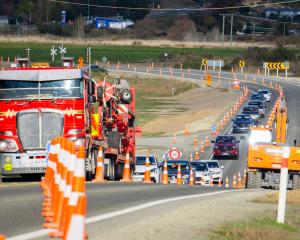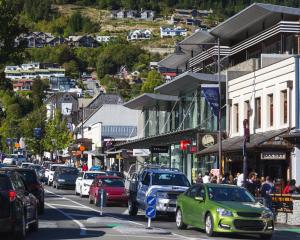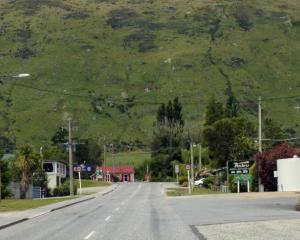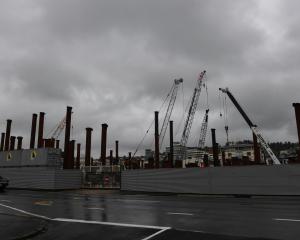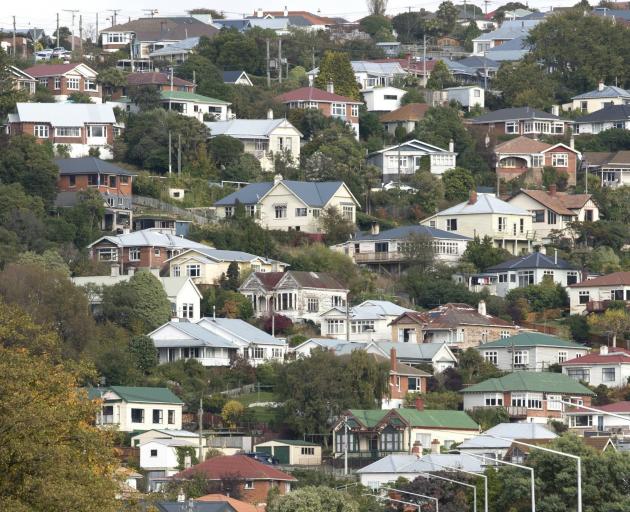
Developers say a new approach from the Dunedin City Council could have wide-ranging, costly consequences and could hinder attempts to increase residential density in the city.
In order to redevelop older properties where lead paint has possibly been used, a new soil-testing process is required, and properties could potentially be permanently added to the Hazardous Activities and Industries List (Hail) register, developers say.
Red tape would need to be duplicated for both the city council and the Otago Regional Council, they say.
The council, on the other hand, says no decisions have been made on its consenting process.
Instead, guidance from the Ministry for the Environment about how to consider pre-1945 buildings as potential Hail sites together with a recent Stantec report on the matter had prompted a review of council processes, a council spokesman said.
"Recently, there have been a small number of cases in Dunedin where there were concerns about potential contamination from lead-based paint during resource consent application processes.
"These triggered Resource Management Act Hail regulations.
"It is possible that in the future, normal consenting processes may include a requirement to consider possibilities for lead contamination if the house is a pre-1945 weatherboard home.
"In the event of any changes, we will provide help with processing applications, provide clear guidance and updates for our customers and stakeholders."
Environmental Consultants Otago principal Ciaran Keogh said lead contamination around residential properties was a "significant issue" in Dunedin.
In the city’s early days it was common practice to scrape back weatherboards and repaint them, which had left a legacy of contaminated soils around Dunedin homes.
Particularly when there had been home renovations in the past, paint ended up in gardens and it was commonly well in excess of what was considered safe for a residential setting, Mr Keogh said.
"More often than not the problem is not that the site’s contaminated, it’s that the material they are removing from the site to do the development is not cleanfill — it has to go to landfill.
"That’s where the real money is starting to impact.
"At the moment, what’s happening is that the developers are getting caught unawares in that they haven’t run into this in the past and so they’ve been buying land on the expectation of a certain return on development and this has actually slipped out of the cost equation.
"The administrative and consenting process and our reporting process might add 10-odd thousand dollars to the overall cost, but these guys should be just accepting the fact that any old site in Dunedin is not likely to meet the definition of cleanfill, so it’s going to have to go to landfill and that’s where the big money comes in."
Cleaning up a 1000sq m site for redevelopment could now cost about $50,000, he said.
Blue Sky Property director Lyndon Fairbairn said new consenting requirements were already in play for some of the company’s applications.
While lead presented a serious issue, if the council deemed it to be "that serious", he questioned why the council would wait until a consent application was lodged to do anything about it.
The in-fill development under way in the city (demolishing old properties and replacing them with higher-density units to meet growing housing needs) had been based on the removal of the city’s stock of villas that were past their use-by date.
Added red tape frustrated that process and would ultimately add to the cost of new homes in the city.
"When you do a development, and you remove a house, you’re actually removing all the soil around it too.
"You do a lot of excavation.
"All contaminated soil is pretty much gone if there was any.
"We’re finding it has just delayed resource consenting already.
"If it’s so much of an issue why don’t they take action on freestanding villas at the moment, or bungalows, pre-1945?"
TGC director George Hercus said no-one disagreed that mitigation needed to be put in place for any health risks from lead-contaminated soil, but he wanted the council to allow owners of sites where building activity had taken place to simply assume their soil was contaminated.
If they were to disturb it, they could be required to dispose of it in an approved Hail landfill.
However, costs were affected by the fact that there were only two companies in the city that provided the required soil testing and Dunedin only had one approved Hail landfill.
The mean age of houses in Dunedin was 53 years old, 86% of the city’s homes were built before 1977 and 45% of its homes were built before 1941, Mr Hercus said.
"So the policy as it currently stands impacts nearly half of all homes in Dunedin."
Added costs would be passed on to consumers, he said.
And until the constraints on development were cleared up Dunedin’s supply of homes would never meet the demand, he said.
The council spokesman said the Dunedin City Council "like other councils" received updated guidance from the Ministry for the Environment.
The council had additionally received the findings of an independent review by Stantec
"Stantec’s report recommends homes and other structures built prior to 1945 could be potential or unverified Hail sites, due to the use of lead-based paint", he said.
The council declined to release the Stantec report to the Otago Daily Times.
The council did not expect any change would have a significant impact on homeowners or development in Dunedin, as only a small number of developments were likely to be affected each year, "but in some cases it may add extra cost to the process".


